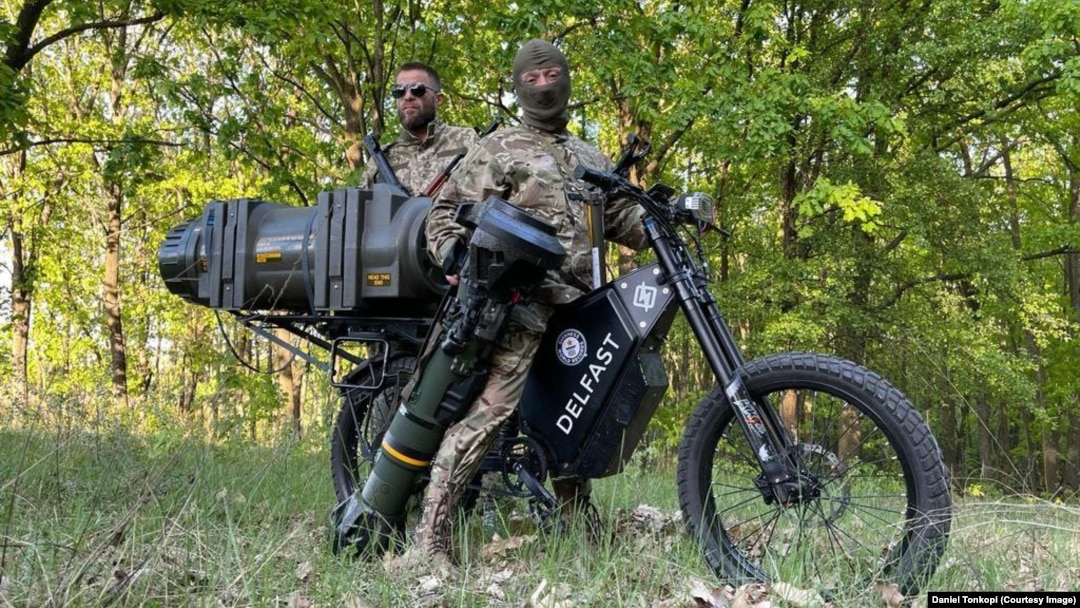Ukrainian fighters are ushering in a new era of battlefield tactics by using powerful locally designed electric bikes.
The image below of a packaged NLAW anti-tank missile mounted to what looks like an off-road motorcycle in Ukraine is causing a buzz in tech media. The two-wheeled vehicle is, in fact, an electric bicycle, and represents a historic tactical advancement in warfare.

Daniel Tonkopi, the co-founder of Delfast, a Ukrainian-U.S. company that made the vehicle, confirmed in a May 16 Facebook post that the company's e-bikes are currently in use by the Ukrainian military.
Tonkopi claimed fighters have used the battery-powered bikes for at least one raid on Russian armored vehicles in which three bikes returned “with holes” from a “very hot” engagement.

A dispatch motorcycle rider on a flooded road in Holland in November 1944.
Motorcycles first rolled onto the battlefield in World War I and proved their worth by being cheap, fast, and able to be wrestled through gluggy terrain where heavier military vehicles foundered.
Today, several militaries, including the United States, are actively researching the potential of electric bicycles in war.
The main advantage of e-bikes is their stealth. For special forces teams, who are often airdropped into enemy territory and have to trek into position, the new technology offers a way to quietly cover large distances, then flee situations that teams would previously have had to shoot their way out of.
E-bikes emit no smell, can wait at the ready in complete silence for “shoot-and-scoot” operations, and can weave through forest paths where most vehicles can’t follow.
An edited photo of a Ukrainian serviceman on an electric bike.
On the social media pages of Eleek, a Ukrainian company that produces mostly civilian e-bikes, there is more evidence of the use of battery-powered bikes by Ukrainians fighting the Russian invasion.
The Ternopil-based company posted the above image of a Ukrainian soldier dressed in typical sniper camouflage on a model of e-bike specifically designed for military use.
Ukrainian-made Eleek Atom Military electric bicycles
The Eleek e-bikes have a maximum range of 150 kilometers, weigh 70 kilograms, and take around five hours to recharge. The lengthy recharge time and high cost are still the chief disadvantages of e-bikes over their petrol-powered forefathers. The Eleek Atom costs $5,245, while Delfast bikes similar to those spotted in Ukraine cost a whopping $6,799.
Eleek's military e-bikes have been nicknamed "Bandero-bikes," after Stepan Bandera, a far-right Ukrainian nationalist and Nazi collaborator.
Ukrainian fighters on a Delfast e-bike with an anti-tank weapon
A recent video shows a fighter from the Georgian Legion, which is currently fighting alongside Ukrainian forces, speeding along a road at what appears close to the Eleek Atom's top speed of 90 kilometers per hour.
A commander from the Georgian Legion told a motoring journalist that his sniper units now operating in eastern Ukraine “have to go and leave fast" in the dynamic fighting currently unfolding in the Donbas.
"So we need electro bikes," he said.


